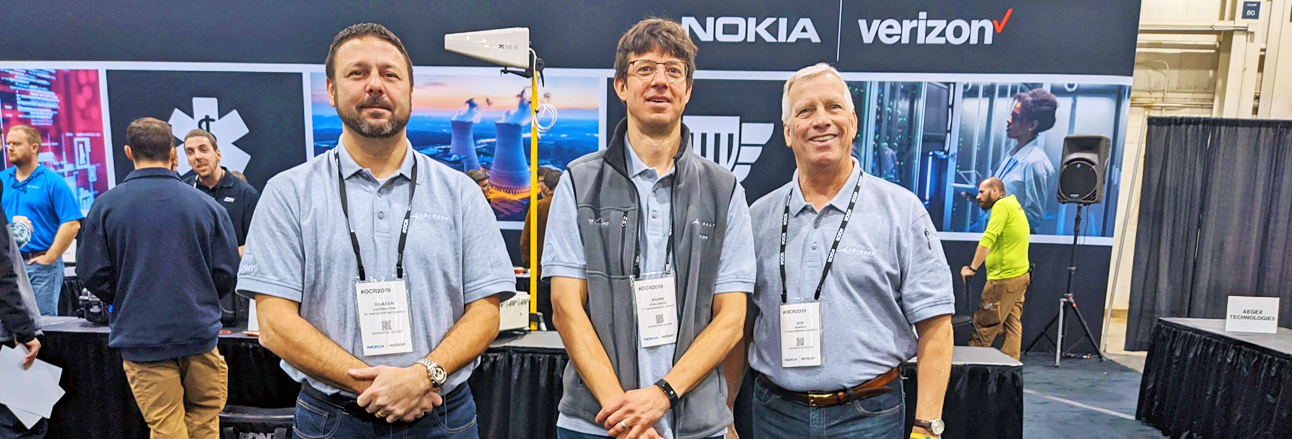At Operation Convergent Response (OCR) sponsored by Verizon and Nokia, first response organizations from around the country test new technologies in a series of simulated disasters based on real events, such as a cyberattack on critical infrastructure, a wildfire, an airport in crisis and more, at the Guardian Centers in Georgia.
ST Engineering iDirect partnered with Verizon for OCR2019 to provide satellite communication solutions for event connectivity and to demonstrate situational awareness during the cyberattack on critical infrastructure scenario. Satellite connectivity continues play a critical role in first response efforts by providing reliable connectivity when terrestrial networks are damaged or unavailable.
While at OCR 2019, ST Engineering iDirect’s Darren Ludington, Ken Harris, and Andre Finlinson took note of the latest trends in the emergency response community. Here’s what they noticed during the three days of OCR this year:
With greater situational awareness, teams can immediately assess the critical nature of a crisis and act accordingly while ensuring first responders stay safe. At OCR 2019, CanAm response vehicles equipped with the Kymeta™ u7 Terminal powered by the iDirect VSAT modem allowed first responders to stay connected and gather information all the way to the frontlines of a disaster site.
Drones were one of the most popular solutions and used in almost every scenario to improve situational awareness. Additionally, more and more technology used had a focus on being ruggedized and portable, so that first responders can take technology into harsh environments without it being destroyed or malfunctioning.
Bandwidth use is at an all-time high for first response efforts
As more devices are taken into the field, the demand for bandwidth is at an all-time high. The ST Engineering iDirect team noted that it’s not uncommon for first responders to carry two to three devices on them to stream video, send data or patch back to headquarters. Increasingly, first response teams expect the same connectivity that you would find in an office, with hundreds of megabits on location during a response. This demand for bandwidth is only expected to increase as more Internet of Things applications come online.
Collaboration was key to scenarios running smoothly
Year over year, the ST Engineering iDirect team has noticed the number of first response organizations, innovative technology companies and government agencies attending OCR grow. This makes the collaboration between agencies, departments and organizations during these scenarios that much more impressive. The team noticed that in sharing infrastructure and information, first responders were able to respond better—and that instant and continuous connectivity was key to make coordination between organizations more successful and efficient.
Satellite is critical to power emerging applications
Satellite connectivity was the backbone to OCR 2019. It provided quick, on-site connectivity via CanAms for first responders and communications back to the emergency command operation centers during scenarios. In addition, Verizon’s cell on wheels (COWs) and cell on light trucks (COLTs) were equipped with ST Engineering iDirect’s satellite routers to provide backhaul speeds up to 100+ Mbps.
As more sensors, appliances and tools come online, satellite will be necessary to ensure first response teams are ready, can respond, can efficiently recover and can effectively rebuild. Satellite connectivity is especially important in situations—such as the wildfire or explosion scenarios—where cellular connectivity has been damaged, destroyed or doesn’t reach.
ST Engineering iDirect continues to lead the development of innovative satcom solutions so that first response organizations and beyond can benefit from more efficient, reliable and affordable satellite connectivity no matter where their work takes them.
